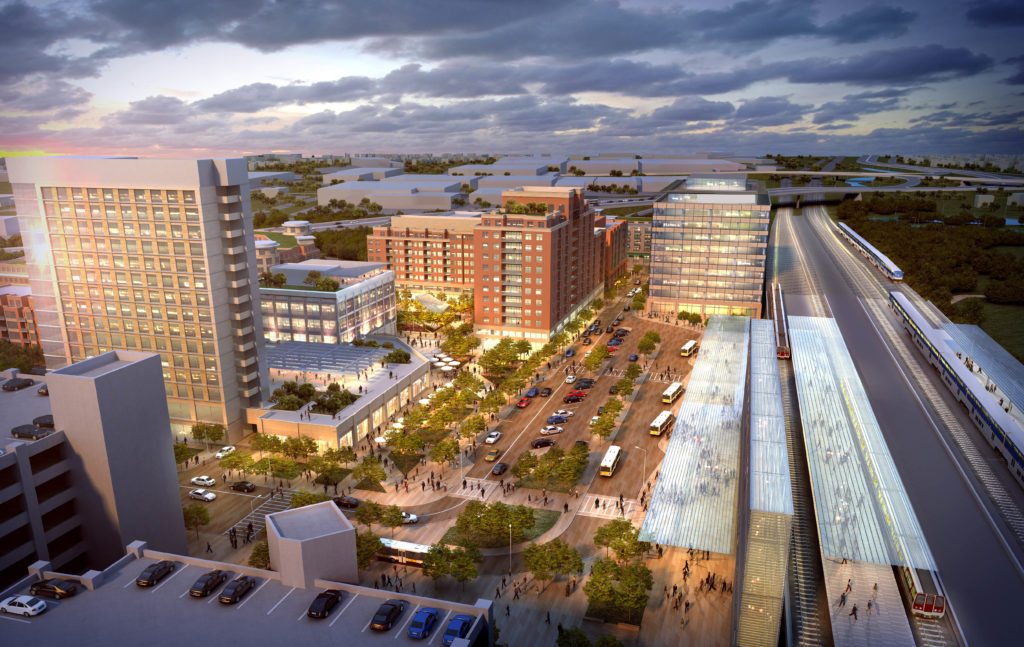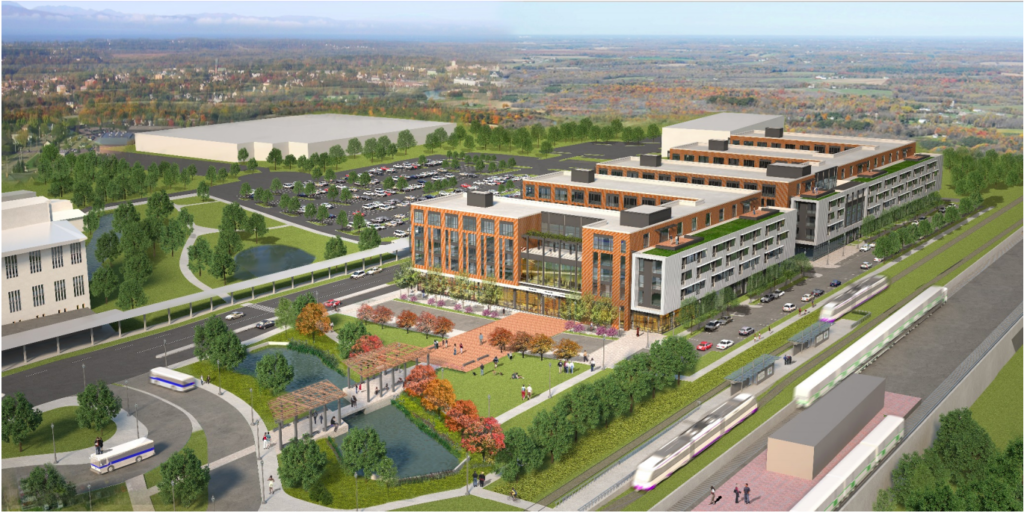By Adam Pagnucco.
In making the case for Bill 29-20, which would grant developers at Metro stations 15-year property tax breaks, supporters claim that Metro high-rise development is not currently happening. And they say that’s the case for the entire region.
Is it true?
WMATA had a spate of development projects at Metro stations from 2002 through 2007, when the region’s real estate market was hot. There are much fewer proposals in the works now. They include:
Grosvenor-Strathmore, Montgomery
WMATA selected Fivesquares Development as its ground lease development partner at the Grosvenor-Strathmore station. In 2018, the Montgomery County Planning Board approved a sketch plan for 1.9 million square feet of mixed use development at the site. The original plan was supposed to include seven buildings, two of which would be 300 feet tall and another 220 feet tall. However, Fivesquares subsequently claimed that it needed tax breaks to finance the high rises, thus giving rise to Bill 29-20. Fivesquares wrote the following in its testimony about the bill:
Simply put, but for this legislation, Montgomery County’s goals to promote high density growth at transit accessible locations and, specifically, to implement the Grosvenor-Strathmore Minor Master Plan Amendment that the Montgomery County Council and Montgomery County Planning Board unanimously approved in 2017, would not be feasible due to the prohibitive economics of building high-rise projects. There is a significant gap in building high rise projects due to the gap between costs and revenue and the unique infrastructure requirements of Metro sites.
In the absence of this legislation, instead of the potential at the WMAT A property at the Grosvenor Strathmore Metro station for over 2,100 units, including over 350 Moderately Priced Dwelling Units (MPDUs), the only feasible development would be lower density, stick-built housing that would dramatically underutilize the site, resulting in less than half the number of total housing units and MPDUs.
New Carrollton, Prince George’s
WMATA plans to replace the parking on the station’s south side with hundreds of thousands of square feet of office, retail and multi-family space. At full build-out, the site could have a dozen buildings ranging in size from five to fifteen stories. Construction of a new garage is also planned for the station’s east side. Along with Grosvenor-Strathmore, this is easily the most aggressive of WMATA’s current development plans.

A rendering of development on the south side. Credit: WMATA.
College Park, Prince George’s
WMATA is planning a 5-story project at this station with more than 400 housing units.

A rendering of development at College Park. Credit: WMATA.
Capitol Heights, Prince George’s
WMATA would like to place a 6-story residential building with ground retail at its Capitol Heights station parking lot. This project was terminated in 2018 but WMATA staff asked for a new solicitation last year. KLNB is advertising the project’s retail component.
Deanwood, D.C.
In 2018, the WMATA board approved a joint development project to replace its Deanwood station parking lot with a mix of residential and retail and a garage. The project is not high-rise; rather, it envisions four-story buildings.
That’s about it. The project in D.C.’s Takoma neighborhood looks stalled as does the Greenbelt site in Prince George’s, which was once considered for the FBI. Amazon’s arrival in Northern Virginia could eventually stimulate development at Metro stations there but that seems quite a ways off.
Other than the Grosvenor-Strathmore site (which led to Bill 29-20) and New Carrollton (which might not have been viable without the relocation of the state’s housing agency), none of these projects has a high-rise component. That’s not an accident. Developers at Metro station sites have to deal with replacing existing parking (either with a garage or underground), station access issues, bus circulation issues and even possible amenities like park space. There is also WMATA’s time-consuming approval process on top of any local planning approvals. Developers of private sites don’t have to deal with these problems. Combine the construction costs of high rise as opposed to wood frame with the extra costs of building at WMATA sites and the economics of such projects get difficult, even with high rents and condo prices.
DC Urban Turf, a website that tracks residential development, lists hundreds of new residential projects that have been delivered, are under construction or are planned in the area. Many of them are high rises. High rises are being built in the region. They are just not being built, for the most part, on Metro stations.
So if high rise construction at Metro stations requires huge tax breaks to work, are the bill’s supporters right? Should Fivesquares and other developers get 15-year property tax exemptions? There are lots of other considerations to be discussed. Let’s do that in Part Three.
